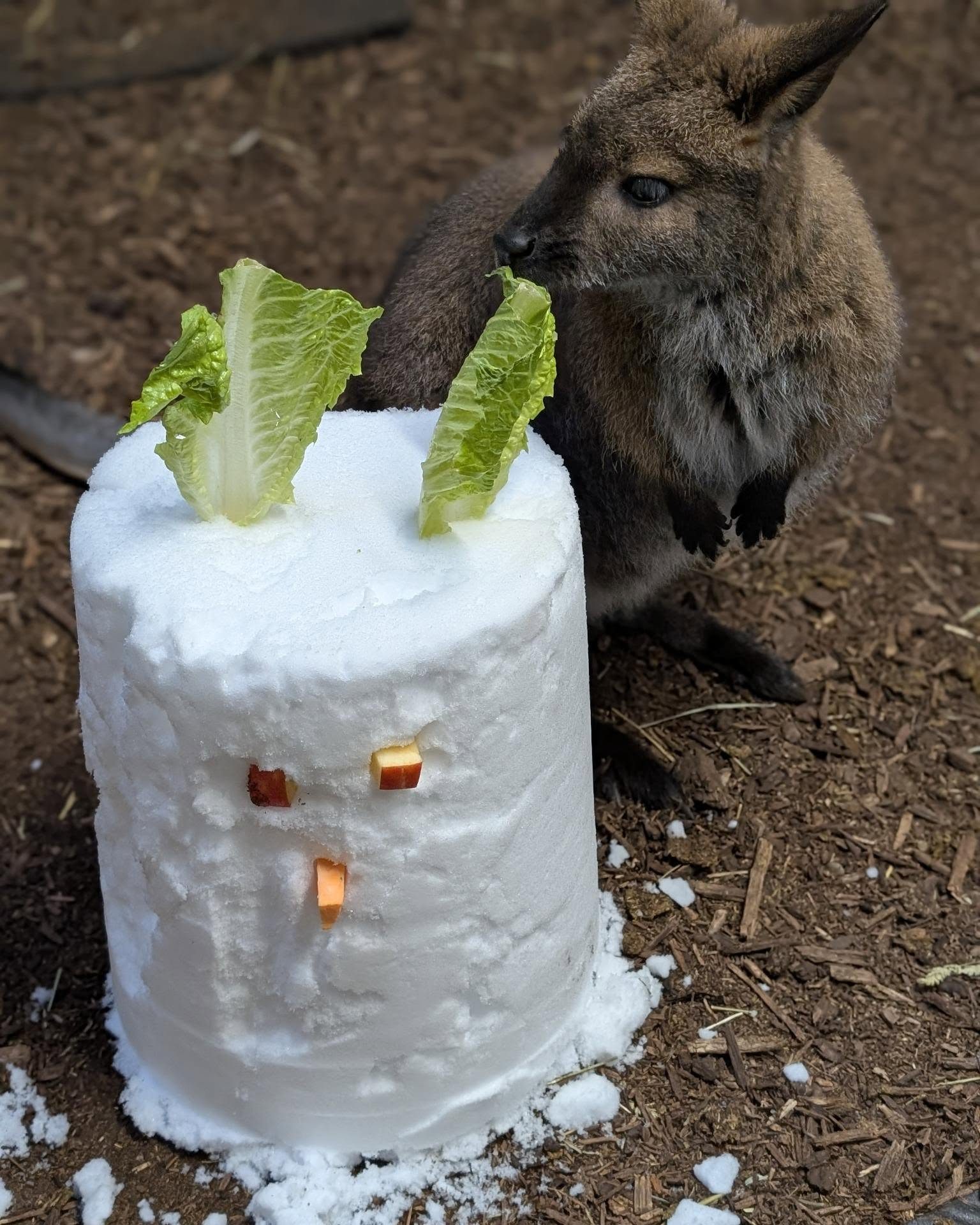- Understanding the unique dietary needs of wallabies and human-animal interactions.
- The significance of enrichment activities in zoos for animal welfare.
- Snowman building with food as an educational and conservation tool.
- The role of curators in zoo management and wildlife conservation.
- The environmental considerations of feeding and enrichment activities in cold weather.
Jackie and the wallabies feature in a delightful tale that touches on themes central to zoology, zoo management, and wildlife conservation. At its core, this story highlights the relationship between animals and their caretakers and exemplifies the enjoyment and enrichment that both species gain from thoughtful interactions.
The unique dietary needs of wallabies require specific attention in the context of both captivity and the wild. Wallabies are primarily herbivores, subsisting on grasses, leaves, and fruits. In the wild, their diet can vary based on geographical and seasonal availability. In captivity, their diet must be carefully curated to mimic natural feeding habits and nutritional needs. This ensures their long-term health and well-being, connecting directly to conservation goals. The inclusion of a snowman decked out in lettuce, apples, and carrots addresses these dietary needs creatively. Lettuce and various fruits provide necessary vitamins and hydration, and the visual and olfactory variety stimulate natural foraging behaviors. These tailored experiences enrich the wallabies’ lives and promote physical activity, reducing stress and enhancing their overall health.
Human-animal interactions in zoo settings must always be approached with respect and understanding of animal behavior. Positive interactions improve animal welfare and can foster a deeper sense of connection and empathy among visitors, enhancing conservation messages. Constructive interaction, such as a frosty feast for wallabies, illustrates the significant role of zoos in engaging the public while prioritizing the needs of the animals. By creating environments where animals express their natural behaviors and instincts, zoos can educate the public about species-specific requirements and the importance of conserving natural habitats.
Enrichment activities are a core part of maintaining animal welfare in zoos. These activities go beyond basic care, offering physical and psychological stimuli to maintain optimal animal health. Feeding interactions, such as incorporating food into play with a snowman, provide vital mental stimulation. In addition, designing dynamic habitats that challenge and engage captive animals keeps them physically active and interested in their environment. This not only contributes to better health outcomes but also allows animals to demonstrate authentic behaviors, much like their counterparts in the wild. Jackie and the wallabies’ frosty feast exemplifies the rich, interactive experiences that enrichment activities can bring about, encouraging natural behaviors and fostering an enriched zoo environment.
Curators like Dan play a crucial role in facilitating these interactions and ensuring the effective management of zoo resources for wildlife conservation. Their expertise spans animal behavior, nutritional requirements, and habitat creation, forming the backbone of successful zoo operations. By overseeing the care and wellbeing of zoo inhabitants, curators not only provide for the immediate needs of the animals but also contribute to broader conservation efforts. They collaborate with veterinarians, researchers, and educators to enhance understanding of each species under their care. Curators’ efforts culminate in experiences like Jackie and the wallabies’ winter snack, demonstrating both innovation in care practices and dedication to promoting public awareness about wildlife conservation.
Environmental considerations are paramount in designing and executing feeding and enrichment activities, particularly in colder climates. The need to keep animals active and engaged must be balanced against seasonal challenges such as temperature, wind, and humidity. Snow-based enrichment serves as an innovative method to provide animals with enriching activities during the winter months, promoting natural behaviors despite the chill. Proper planning and execution allow for successful winter interactions that support wallabies’ health and enrich zoo exhibits with memorable visitor experiences.
Through Jackie and the wallabies’ frosty feast, the fundamental themes of zoology and conservation emerge vividly. Engaging activities at zoos provide opportunities to educate the public about the specific needs of animals and the importance of conserving their natural habitats. Carefully designed interactions lead to better health, improved welfare outcomes, and increased public awareness, vital to the ongoing mission of global wildlife conservation.
*****
Source Description
Wallaby friends forever? ☃️
Jackie and the wallabies enjoyed a frosty feast with this extra-special snowman decked out in lettuce, apples, and carrots. A winter snack and a friend all in one—talk about snowman goals.
📸: Curator Dan


